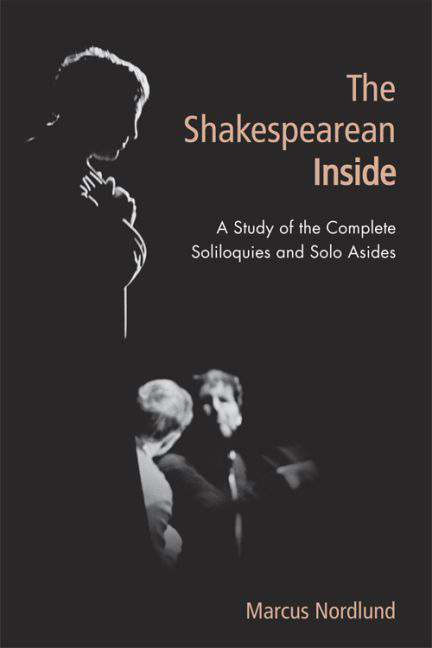1 - Direction
Published online by Cambridge University Press: 08 August 2017
Summary
The Shakespearean inside, as I define it here, is a speech spoken by a character who forms part of the action and whose words are not intended to be heard by any other character on the stage. This makes it possible to isolate insides conceptually from other types of speech and to study them systematically. The chapters that follow will become progressively more empirical and quantitative in nature, weaving together the detailed textual analysis of individual plays and passages with accounts of larger patterns in Shakespeare's dramatic practice. But before we bring out the graphs and tables in Chapters 3 and 4 we must look more closely at the nature of the Shakespearean inside, since the definition leaves two questions unanswered:
1. If Shakespeare's insides are not addressed to another character, then who is being addressed? Do the speakers address themselves or the audience?
2. Can we always know if a Shakespearean actor or character intends to address another character? Will there not be hybrids and borderline cases?
This chapter will concern itself with the first question, about selfaddressed versus audience-addressed speech, and the title is meant as a pun on the theatrical and the spatial senses of the word ‘direction’. What dramatic conventions appear to have governed the physical direction in which Shakespeare's actors delivered their insides – did they normally address them to themselves, or to the audience? How strict were these conventions? Did Shakespeare write his plays with the idea that his actors would mix different styles, or did he keep them separate? Did he prefer one over another? Chapter 2, entitled ‘Divergence’, will then explore the second question about hybrids and borderline cases between insides and ordinary dialogue, with a particular eye to how Shakespeare seems to have worried the line between dialogue and soliloquy for dramatic purposes.
If we were simply in the business of classifying and counting insides, the question of their direction could be left open. An inside is an inside irrespective of how it is addressed, as long as it is not addressed to another character.
- Type
- Chapter
- Information
- The Shakespearean InsideA Study of the Complete Soliloquies and Solo Asides, pp. 15 - 60Publisher: Edinburgh University PressPrint publication year: 2017



